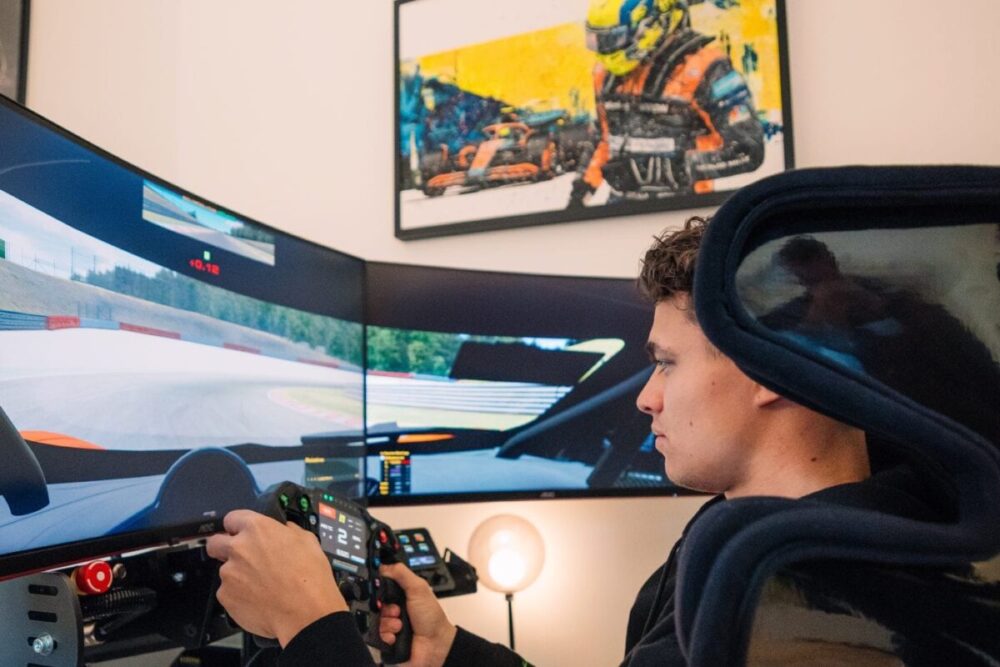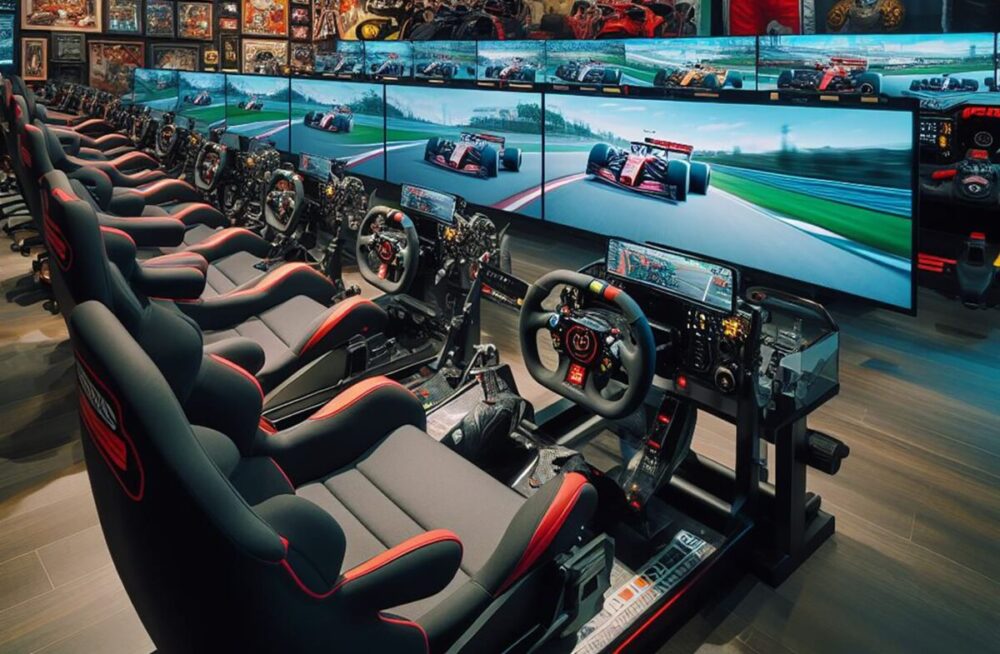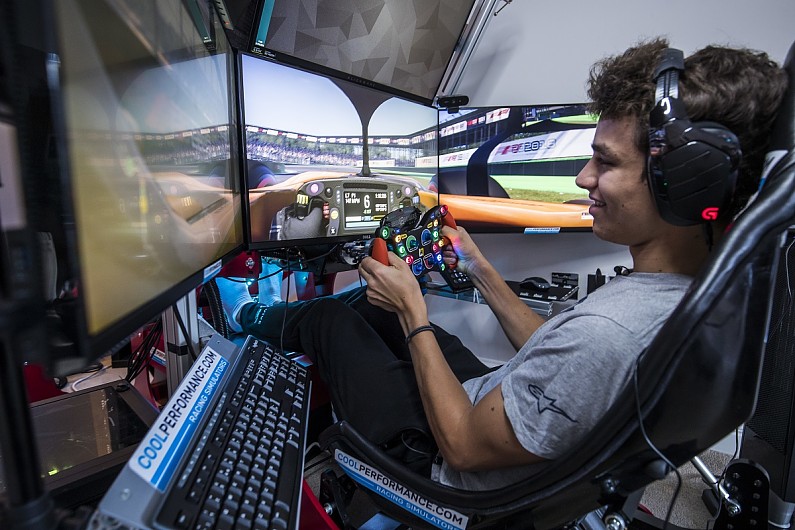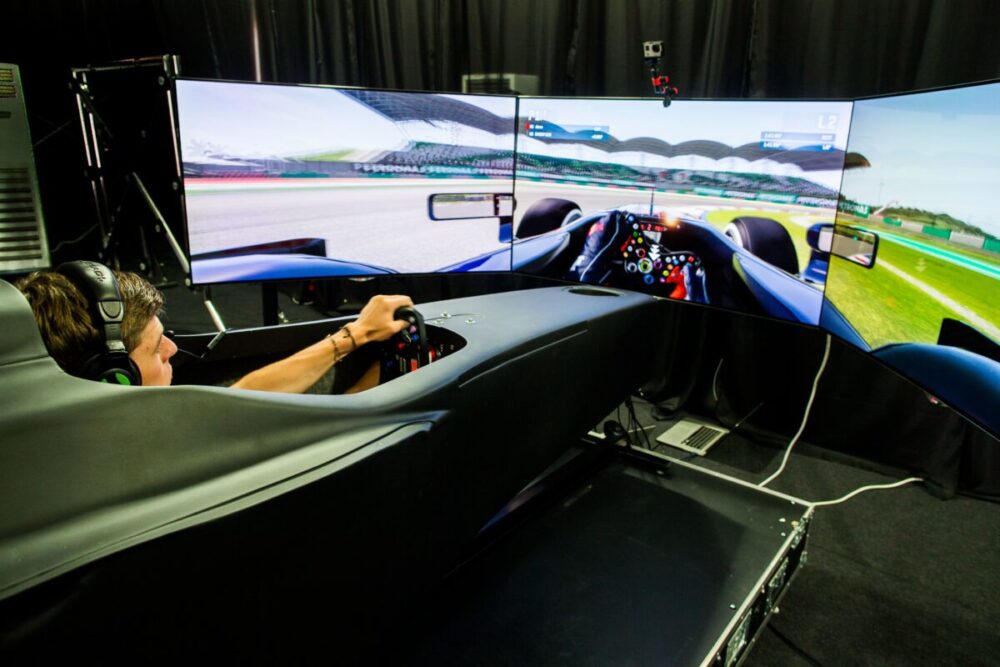The world of Formula 1 (F1) is defined by speed, precision, and the relentless pursuit of perfection. F1 drivers need not only to possess exceptional physical fitness and reflexes but also to master an array of skills that can only be honed through extensive practice and experience. In recent years, sim racing has emerged as a powerful tool for F1 drivers to enhance their abilities and gain a competitive edge. What once was merely considered a pastime or training exercise has now become an integral component of preparation for many professional racers. This article explores what F1 drivers learn from sim racing and how it contributes to their performance on the track.
F1 drivers turn to sim racing for a variety of reasons, including refining their racecraft, understanding track layouts, and enhancing their mental fortitude. One key area where sim racing provides significant benefits is in the ability to learn sim racing techniques and strategies without the risks and constraints of real-world racing.
Simulators offer a highly controlled environment where racers can practice repeatedly under different scenarios, thereby building their adaptability and response times. This helps drivers internalize the nuances of different tracks, corners, and braking points, translating into more confident and informed driving when they hit the real circuits.
Enhancing Track Familiarity

Source: podiumlife.com
Track knowledge is crucial in F1 racing. The ability to predict how a car will behave on different parts of the circuit allows drivers to make split-second decisions, which can mean the difference between victory and defeat. Sim racing provides F1 drivers with a platform to familiarize themselves with the intricate details of a track before ever setting foot on it.
This includes understanding the elevation changes, corner radii, and surface grip levels. By practicing on a simulator, drivers can develop a mental map of the circuit, which enhances their spatial awareness and overall track familiarity. This preparation can be especially valuable for tracks that are newly added to the F1 calendar or those that drivers have not previously raced on.
Improving Racecraft and Strategy
Racecraft refers to the skill and knowledge required to race effectively against other competitors, including overtaking maneuvers, defensive driving, and positioning. Sim racing offers a risk-free environment to practice and improve these vital skills. F1 drivers can engage in simulated races with AI opponents or other human players, where they encounter various race scenarios that can arise during actual competitions. This experience helps racers refine their ability to manage close-quarters racing, make calculated overtakes, and anticipate the actions of other drivers on the track.
Developing Mental Resilience
The mental demands of F1 racing are immense. Drivers must maintain focus for extended periods while dealing with high levels of stress and pressure. Sim racing helps build the mental resilience required to excel in these conditions. The immersive nature of modern simulators, which closely replicate the sights and sounds of an actual F1 car, forces drivers to maintain concentration and composure as they navigate complex scenarios.
Moreover, sim racing encourages drivers to develop a growth mindset. Mistakes made in the simulator do not carry the same consequences as those made on a real track, allowing drivers to learn from their errors without fear of injury or damage. This fosters a learning environment where racers can push their limits, experiment with different approaches, and continuously refine their skills. Over time, this iterative process builds mental toughness and adaptability, crucial attributes for success in the high-pressure world of F1 racing.
Table: Key Benefits of Sim Racing for F1 Drivers

Source: blog.purestorage.com
| Benefit | Description |
| Track Familiarity | Sim racing allows drivers to learn the intricacies of tracks, including elevation changes, grip levels, and corner radii, enhancing their spatial awareness. |
| Racecraft Improvement | Drivers can practice overtaking, defensive driving, and positioning in a risk-free environment, refining their racecraft skills. |
| Strategic Planning | Simulators enable experimentation with different strategies, such as tire management and pit stops, using real-time data analysis for optimal decision-making. |
| Mental Resilience Development | Sim racing builds focus, concentration, and a growth mindset by allowing drivers to learn from mistakes without real-world consequences, fostering mental toughness. |
Fine-Tuning Car Setup
Another crucial aspect of F1 racing is the car setup, which needs to be finely tuned to suit the specific demands of each track and the driving style of each driver. Sim racing provides an effective platform for drivers to experiment with different car setups, adjusting parameters such as suspension settings, aerodynamic configurations, and tire pressures. By doing so, drivers can work closely with their engineers to identify the setup that offers the best balance of speed, handling, and stability.
Bridging the Gap During Off-Season
The off-season in F1 is typically a period when drivers have limited access to real-world track time due to restrictions and regulations. Sim racing provides a means to stay sharp and maintain racing fitness during these downtimes. By regularly engaging in sim racing, drivers can keep their skills honed and stay mentally engaged with the sport. This ensures that they remain competitive and ready to perform at the highest level when the season resumes.
Furthermore, sim racing allows drivers to work on specific areas of their driving that may need improvement. Whether it’s refining their braking technique, improving their consistency, or developing better tire management skills, the flexibility of sim racing makes it an ideal training tool. It also allows for innovation, as drivers can experiment with new approaches and techniques without the constraints of a real-world environment.
Conclusion

Source: startinggrid.wordpress.com
Sim racing has evolved from a mere training tool to a vital component of preparation for F1 drivers. By offering a realistic and immersive environment to learn sim racing techniques, drivers can enhance their track familiarity, improve their racecraft, develop mental resilience, fine-tune car setups, and bridge the gap during the off-season.
The insights gained from sim racing translate into tangible performance improvements on the track, providing drivers with a competitive edge that can make all the difference in the world of Formula 1. As the technology behind sim racing continues to advance, its role in F1 is likely to become even more significant, shaping the future of driver development and training in motorsports.





















